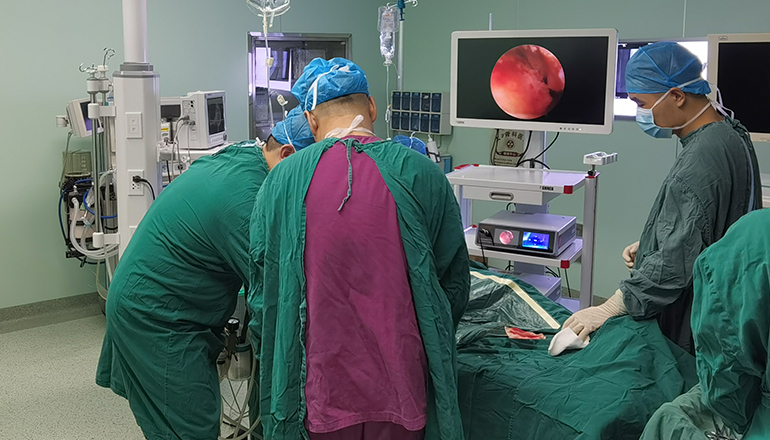- Shanghai, China
- [email protected]
- +86-21-58189111
Arthroscopy surgery is a minimally invasive surgical procedure used to diagnose and treat joint problems. It involves the use of an arthroscope, a thin tube with a camera and light attached, which is inserted through a small incision to view the joint and guide surgical instruments. This procedure is commonly used to treat joint conditions in the knee, shoulder, elbow, wrist, ankle, and hip. Arthroscopy offers several advantages over traditional open surgery, including:
Less Invasive: Arthroscopy surgery is less invasive than traditional open surgery. It requires only small incisions, which means less trauma to the surrounding tissues, less blood loss, and a faster recovery time. It also reduces the risk of infection and scarring.
Shorter Recovery Time: Patients who undergo arthroscopy surgery typically experience a shorter recovery time than those who have open surgery. They can return to their normal activities much sooner and are less likely to experience long-term joint stiffness or weakness.
Reduced Pain: Arthroscopy surgery is less painful than traditional open surgery. The small incisions and minimal tissue damage result in less postoperative pain, which means that patients need less pain medication and can recover more comfortably.

Improved Accuracy: The use of an arthroscope allows for better visualization of the joint, which means that surgeons can more accurately diagnose and treat joint problems. They can also perform more precise surgical procedures, such as removing damaged tissue or repairing ligaments.
Reduced Risk of Complications: Arthroscopy surgery carries a lower risk of complications than traditional open surgery. Because it is less invasive, there is less risk of infection, bleeding, or damage to surrounding tissues. This means that patients are less likely to experience serious complications and can recover more quickly.
Outpatient Procedure: Arthroscopy surgery is often performed as an outpatient procedure, which means that patients can return home the same day as their surgery. This reduces the cost of hospitalization and makes the procedure more convenient for patients.
Cost-Effective: Arthroscopy surgery is often more cost-effective than traditional open surgery. The shorter recovery time and reduced risk of complications mean that patients require less postoperative care and medication, which reduces overall healthcare costs.
Arthroscopy surgery offers several advantages over traditional open surgery, including less invasiveness, shorter recovery time, reduced pain, improved accuracy, reduced risk of complications, outpatient procedure, and cost-effectiveness. It is a safe and effective way to diagnose and treat joint problems and can greatly improve a patient's quality of life.
Arthroscopy surgery has become a popular choice for patients and surgeons alike due to its numerous benefits. It is commonly used to treat a range of joint conditions, including cartilage damage, ligament tears, and joint inflammation. However, it is important to note that arthroscopy surgery may not be suitable for all patients, particularly those with severe joint damage or complex conditions. It is important to consult with a qualified orthopedic surgeon to determine the most appropriate treatment option.
In summary, arthroscopy surgery is a minimally invasive surgical procedure that offers many benefits over traditional open surgery. It is a safe and effective way to diagnose and treat joint problems, with a shorter recovery time and reduced risk of complications. As technology continues to advance, arthroscopy surgery is expected to become even more precise and effective, providing patients with improved outcomes and a better quality of life.
Leave a Comments